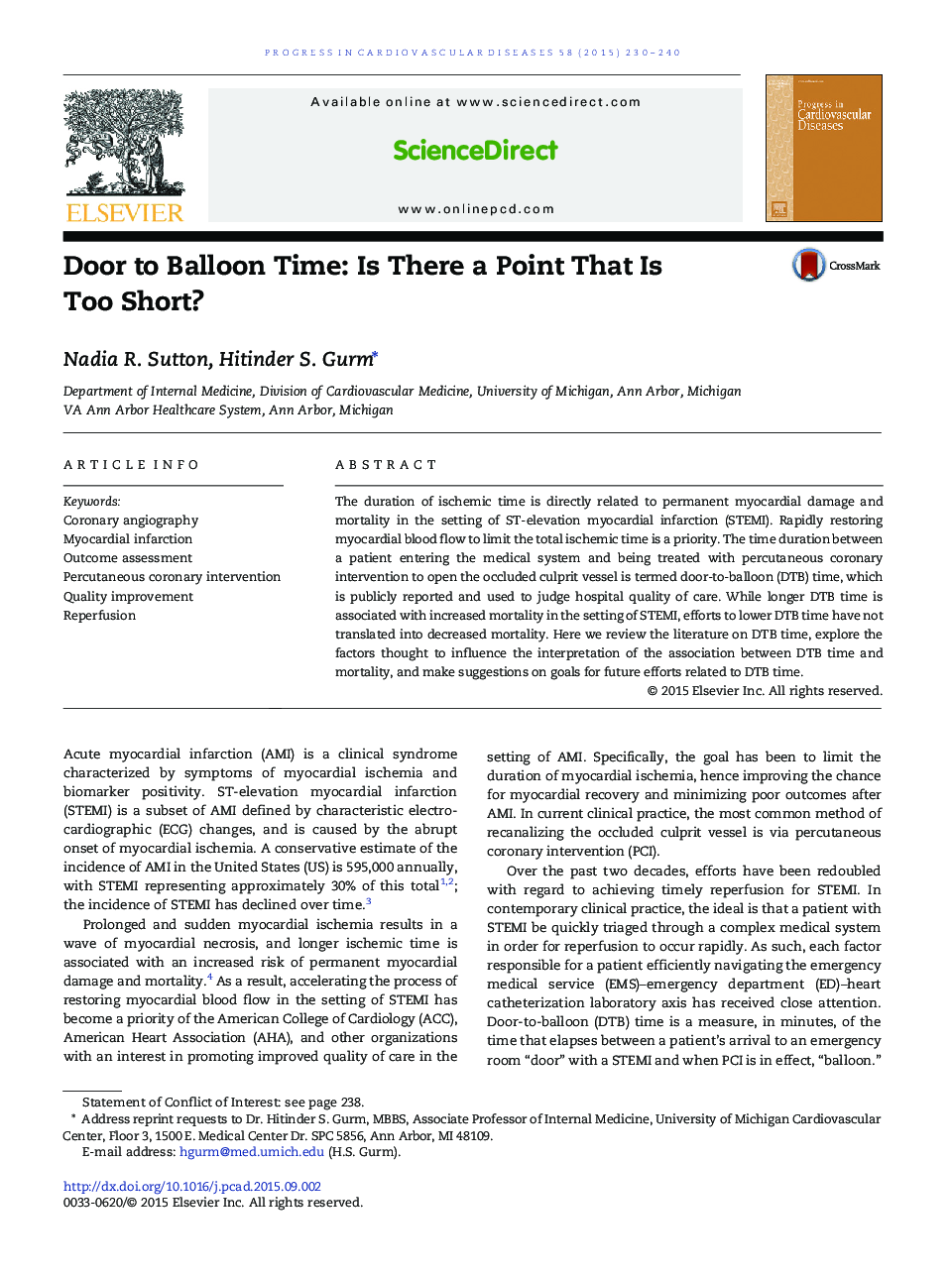| Article ID | Journal | Published Year | Pages | File Type |
|---|---|---|---|---|
| 3006274 | Progress in Cardiovascular Diseases | 2015 | 11 Pages |
The duration of ischemic time is directly related to permanent myocardial damage and mortality in the setting of ST-elevation myocardial infarction (STEMI). Rapidly restoring myocardial blood flow to limit the total ischemic time is a priority. The time duration between a patient entering the medical system and being treated with percutaneous coronary intervention to open the occluded culprit vessel is termed door-to-balloon (DTB) time, which is publicly reported and used to judge hospital quality of care. While longer DTB time is associated with increased mortality in the setting of STEMI, efforts to lower DTB time have not translated into decreased mortality. Here we review the literature on DTB time, explore the factors thought to influence the interpretation of the association between DTB time and mortality, and make suggestions on goals for future efforts related to DTB time.
